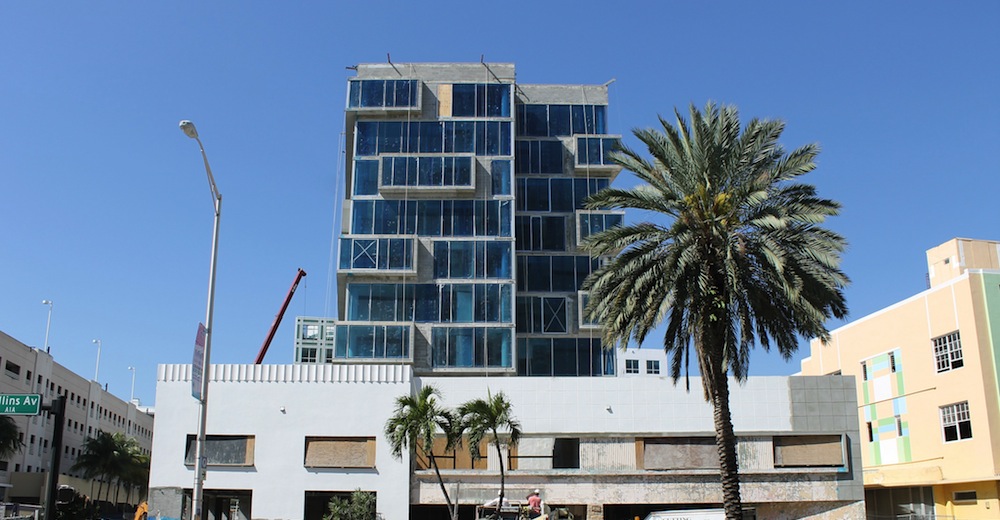As green principles gain traction in travelers’ preference and the hospitality industry responds, something has been noticeably lacking in industry – a simple way to benchmark sustainability performance against the competition. Fortunately, The Cornell Center for Hospitality Research (CSR) has recognized this need and has filled the void with the introduction of the Hotel Sustainability Measurement Tool.
Developed by Howard Chong, assistant professor at the Cornell University School of Hotel Administration and Eric Ricaurte, the founder of Greenview, the complimentary tool will allow hoteliers to compare energy and water use as well as their carbon footprint in a clear and concise platform.
To develop the tool, Ricaurte and Chong benchmarked 4,725 hotels properties from 11 international hotel companies including; Hilton Worldwide, Hong Kong and Shanghai Hotels, Host Hotels & Resorts, Hyatt Hotels Corporation, IHG, Mandarin Oriental, Marriott International, Park Hotel Group, PGA Golf Resort, Saunders Hotel Group, and Wyndham Worldwide.
With this broad and varied data set, the baseline benchmarking will be incredibly interesting for hoteliers to see and understand. The tool provides a range of energy, water, and carbon data within each market and in broad segments as a baseline, from which hoteliers or their consultants can derive adjustments, normalization, and rationalize how they fit in the range.
How will your hotel fare? The hotels are grouped by STR Global’s segments (full service segments) and also geographic areas. To see the benchmark, a user selects the geographic region and segment, and with that information the tool provides a statistical range for carbon footprint and energy use per room, per occupied room and per square foot.
Tools like this are very accessible and valuable for hoteliers of any size to see how their hotel performance compares to similar properties. Historically, this has been the challenge in the hospitality industry with ENERGY STAR Portfolio Manager as the algorithms used can sometimes skew the comparison. Additionally, there are simply not enough other hotels of similar type to create a true benchmark.
For example, convention hotels are much more energy-intensive per square foot or per room as they have large meeting spaces that are part of the calculation, compared to a full service resort with limited indoor climate controlled public space. In scenarios like this, you are comparing apples to oranges. With the new tool, Ricaurte and Chong have done an excellent job in defining which properties are apples, pears, grapes and oranges for accurate comparison.
The tool will become more valuable with time as more hotels participate and the data set becomes bigger and provides a more robust benchmark.
With sustainability benchmarking becoming increasingly important for business, Paladino and Company has developed a similar tool in the retail shopping center world in conjunction with the International Council of Shopping Centers (ICSC). The tool, the ICSC Property Efficiency Scorecard, helps to establish credible measurement techniques for sustainability in the retail industry, which much like hospitality, suffered from difficult benchmarking practices due to its wide variety of space uses including differing tenant mix and relative share of resource consumption between landlord and tenants. Based on the newly collected data, Paladino will provide an updated report on how the shopping center industry is performing as an aggregate in the near future.
Benchmarking is the best way to set industry goals and track progress. Understanding progress through industry comparisons and data will help further drive behavior, inspire friendly completion and thus continue to set the sustainability bar higher.
We are excited to see more organizations and trade associations working to help their industries to reduce their resource consumption and shared effect on climate change.
About the Author: Dina Belon, LEED AP ID&C, is the director in Paladino’s Seattle office. She is responsible for elevating real estate owners’ portfolios through effective sustainability strategies that are result-driven and have measurable impact. As a director, she leads business development, strategic planning, program development and change management spanning markets from commercial real estate to retail and hospitality.
More from Author
Paladino | Jan 10, 2022
The future of regenerative building is performance-based
Why measuring performance results is so critical, but also easier said than done.
Paladino | May 26, 2021
Injecting embodied carbon capability into the integrated design and construction process
Embodied carbon is defined as the carbon footprint of a material, and is expressed in metric tons of CO2e.
Paladino | May 12, 2021
Climate modeling for a resilient business and future
This post explores changes that developers and their teams need to make to their risk and resilience strategies by climate modeling for climate change.
Paladino | Apr 26, 2021
Building performance requirements are coming: Are you ready?
Building Performance Requirements are trending nationwide and are likely coming to a county near you.
Paladino | Feb 8, 2021
Six lessons learned from our first Fitwel Viral Response Module certification
The Fitwel Viral Response Module is one of several frameworks that real estate owners and operators can use to obtain third-party certification for their efforts ensuring their properties are ready for a safer and healthier return to work.
Paladino | Jan 14, 2021
Shift your energy to carbon
Now is the right and necessary time for the commercial real estate industry to shift its environmental strategy from just energy, a carbon contributor, to carbon itself.
Paladino | Nov 13, 2020
5 tips when designing for daylight
Daylight modeling is a tool to examine how daylight interacts with a building, and how that natural light behaves within interior spaces.
Paladino | Jul 16, 2020
COVID readiness: IWBI and USGBC seek to help businesses quantify risk
In an effort to address the risks of COVID-19 at the building scale, USGBC and IWBI have analyzed existing certification guidelines and drafted new, relevant content.
Paladino | Jun 5, 2020
3 strategies to improve the wellness of building systems and gain tenant trust
Three operational issues that must be prioritized for every building in order to achieve tenant trust are air quality/ventilation, relative humidity, and building commissioning.
















